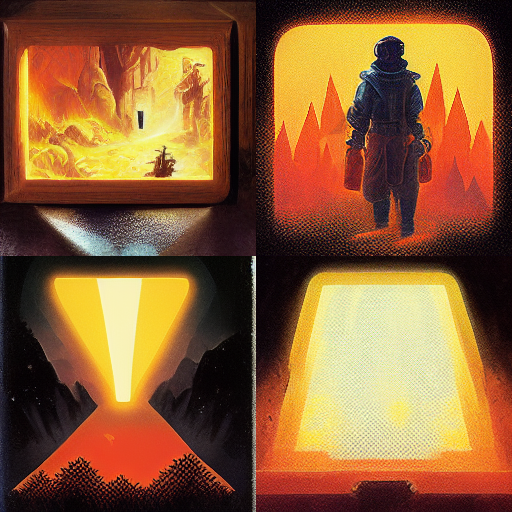ChatGPT is not simply a chatbot — it can imagine entire virtual worlds using the power of its large language model (LLM). Using it, I discovered that I could recreate the experience of early text adventure games and multiuser dungeons.
One of the classic genres of computer gaming is the text adventure. Games like the Original Adventure in the Colossal Cave and Zork paved the way for a wide range of roleplaying games around which an entire industry was created, as well as the high-social experiences that began in multiuser dungeons (MUDs).
Here’s the prompt, so you can experiment yourself:
I want you to act as if you are a classic text adventure game and we are playing. I don’t want you to ever break out of your character, and you must not refer to yourself in any way. If I want to give you instructions outside the context of the game, I will use curly brackets {like this} but otherwise you are to stick to being the text adventure program. In this game, the setting is a fantasy adventure world. Each room should have at least 3 sentence descriptions. Start by displaying the first room at the beginning of the game, and wait for my to give you my first command.
GPT imagined a complete game environment with the standard commands. It could keep track of my inventory, map location and invented plausible room descriptions:
Unlike a more free-form environment like AIdungeon it enforced rules and constraints, like not letting me simply break open a chest I found:
It would retain context as I moved through the dungeon, including the ability to understand items I collected:
But why stop with single-player adventure games? Could you get it to dream up a multiplayer experience, along with simulated players. It’s a bit tricky and hard to get consistent results — but this works (try it multiple times, and I’d encourage tweaking it):
I want you to act as if you are a classic text adventure game called a Multiuser Dungeon (MUD) and we are playing. I don’t want you to ever break out of your character, and you must not refer to yourself in any way. As part of the simulation of the MUD, I want you to pretend there are other players there that I can interact with. If I want to give you instructions outside the context of the game, I will use curly brackets {like this} but otherwise you are to stick to being the text adventure program. In this game, the setting is a fantasy adventure world. Each room should have at least 3 sentence descriptions. Another player (who should be given a name, is pretending to be an actual human player who enjoys playing MUDs) should be in the starting room location. If they speak, put it in a code section. Start by displaying the first room at the beginning of the game. Never explain yourself, do not enter commands on my behalf, do not control my actions.
I was able to simulate MUDs with other players, including players who had views on the moral value of powerlevel and warned me of behaviors that could get my account banned. Here’s “Joe,” who I met in the MUD that ChatGPT dreamed up:
I’ve described the metaverse in a number of ways — and a central theme is the intersection of creativity, identity, and real-time virtual worlds. As we collaborate with artificial intelligence, we may indeed open up a new canvas that Blake once imagined:
To see a World in a Grain of Sand
And a Heaven in a Wild Flower
Hold Infinity in the palm of your hand
And Eternity in an hour
— William Blake, Auguries of Innocence
The creation of text adventures and MUDs was inspired by the work of Jonas Degrave, who showed that you could simulate a Linux computer inside GPTchat.
Read More: medium.com









 Bitcoin
Bitcoin  Ethereum
Ethereum  Tether
Tether  XRP
XRP  Solana
Solana  USDC
USDC  Dogecoin
Dogecoin  Cardano
Cardano  TRON
TRON  Lido Staked Ether
Lido Staked Ether  Wrapped Bitcoin
Wrapped Bitcoin  Sui
Sui  Chainlink
Chainlink  Wrapped stETH
Wrapped stETH  Avalanche
Avalanche  Stellar
Stellar  Shiba Inu
Shiba Inu  Hedera
Hedera  LEO Token
LEO Token  Hyperliquid
Hyperliquid  Bitcoin Cash
Bitcoin Cash  Toncoin
Toncoin  Litecoin
Litecoin  Polkadot
Polkadot  USDS
USDS  WETH
WETH  Monero
Monero  Pi Network
Pi Network  Wrapped eETH
Wrapped eETH  Bitget Token
Bitget Token  Pepe
Pepe  Binance Bridged USDT (BNB Smart Chain)
Binance Bridged USDT (BNB Smart Chain)  Ethena USDe
Ethena USDe  Coinbase Wrapped BTC
Coinbase Wrapped BTC  WhiteBIT Coin
WhiteBIT Coin  Uniswap
Uniswap  Bittensor
Bittensor  Dai
Dai  NEAR Protocol
NEAR Protocol  Aptos
Aptos  Aave
Aave  OKB
OKB  Ondo
Ondo  Jito Staked SOL
Jito Staked SOL  Internet Computer
Internet Computer  Ethereum Classic
Ethereum Classic  BlackRock USD Institutional Digital Liquidity Fund
BlackRock USD Institutional Digital Liquidity Fund  Tokenize Xchange
Tokenize Xchange